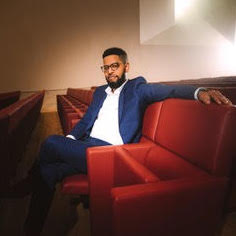Building a Creative Community: A Spotlight on JTS Rabbinical Student Kendell Pinkney
Posted on Apr 06, 2022
By Donna Burkat

Who are Jews of color (JOC)? What does this term constitute? What will be their contribution to the Jewish community and the world at large, going forth? There are many more questions than answers as this new movement progresses.
To learn more about how the term “Jews of color: has evolved, I recommend Sarah Breger’s article dated September 2020. The term is evolving, “reflecting the Jewish community’s reckoning with race and its own racial blind spots,” according to Breger. Kendell Pinkney is a fifth-year JTS rabbinical student, who is changing the lens through which we see Jews by utilizing art, acceptance, and creativity. Kendell is African-American, and I was curious as to how he perceives himself as a Jew and his emerging rabbinate.
What will your degree be in, and what are your career goals?
In May, I will receive ordination and a master’s degree in Jewish studies. My career goals are threefold: Get back to my playwriting practice, continue to build The Workshop, and produce interesting, impactful art-forward projects across various forms of media.
The Workshop is North America’s first arts and culture fellowship for professional JOCISM (Jews of color, Indigenous Jews, [indigenous peoples of the Americas], Sephardi and/or Mizrahi creatives. As an “arts forward” organization, we provide artists with various kinds of support and resources. We provide a wide berth to develop their creative visions and explore where they intersect with elements of Jewish text and heritage. I believe wholeheartedly that when you trust JOCISM creatives to make work that is meaningful within the JOCISM creative community, you end up with work that is Jewishly relevant.
What prompted you to become interested in Judaism and Conservative Judaism in particular?
I became interested in Judaism while attending Oberlin College. While it is hard to recall what prompted my interest way back then, I can say that the kindness of many of my earliest friends from Hillel kept me coming back.
Does being a Jew of color bring challenges in your life?
There are certainly challenges that come with being a Jew of color. Many of them have been succinctly highlighted in the report of the Jews of Color Initiative, so I won’t belabor them here. What I would like to foreground, however, is the inverse: namely, the joys of being a Jew of color. The past two years of working with different JOC communities has shown me the incredible beauty, ingenuity, resilience, and creativity of its members. To go to a JOC parashah study at Ammud or to see works of art that JOC artists are producing gives me hope in an increasingly tense era.
Do you feel torn between your culture of origin and being Jewish?
As human beings we all inhabit different identities. I am a son, husband, artist, student, a child of the Black church, and a convert who adopted Ashkenazi rites. All these identities intersect in unique, fascinating, and occasionally challenging ways. The key has been to realize that any promise of full, easy integration of one’s identities is a myth, regardless of racial or ethnic background. My primary goal is to be patient with myself as I continue to figure it all out.
Please donate to Torah Fund, which helps support the very important mission of our institutes of higher education, to keep Conservative/Masorti Judaism thriving and reaching new heights.
Back to Chadashot


